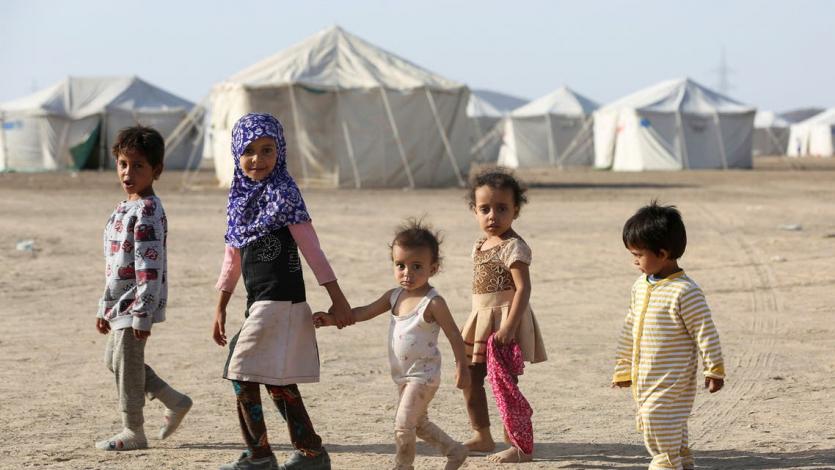Children are pictured at a camp for displaced people in Marib, Yemen. Photo:Reuters
By Patryk Krych | The World Daily | FEBRUARY 14th 2021
According to a report provided by aid groups, at least 400,000 children in the war-torn country of Yemen are at risk of starving to death throughout the year of 2021. The warning stated that the 7-year cycle of war, famine and now the COVID-19 pandemic in Yemen will all contribute to the overall total of deaths and sufferings.
That latest Integrated Food Security Phase Classification report, released on Friday, had found that somewhere close to 2.3 million children in Yemen –all under the age of 5– will suffer due to malnutrition or feel the effects of hunger by the end of 2021. Of that total, 400,000 are expected to end up among the building figures of the country’s already-harrowing death toll before the year comes to a close.
“These numbers are horrific. It’s deeply worrying that millions of children are already in a daily battle for survival and that it’s only getting even worse,” said Save the Children’s country director for Yemen, Xavier Joubert. “The figures are a clear warning that 2021 is going to be a long and possibly deadly year for children in Yemen unless urgent action is taken.”
The famine and food crisis in Yemen has been going on for years now, with children among the most affected by the terrible conflict. As it stands, the 2.3 million children expected to suffer make up more than half of all the children in Yemen. This is an expected rise in suffering by 16% when compared with last year.
80% of the of population of Yemen, which numbers about 30 million people, is now dependant on aid groups and professional assistance. With a deadly combination of famine, climate change, and now a pandemic to contend with – this isn’t likely to change very much anytime soon.
With the onset of famine, children are vulnerable to more than just the COVID-19 pandemic – which has worsened the famine conditions in the country, no doubt. Dr Tedros Adhanom Ghebreyesus, director general of the WHO said that the medical risks towards children go much farther than that.
“Malnourished children are more vulnerable to diseases including diarrhoea, respiratory infections and malaria, which are of great concern in Yemen, among others,” said Dr Tedros. “It is a vicious and often deadly cycle, but with relatively cheap and simple interventions, many lives can be saved.”
Severe acute malnutrition may affect more than just the plenty of vulnerable children. The report had added that a projected 1.2 million pregnant or breastfeeding women in Yemen are also to suffer from being acutely malnourished in 2021.






